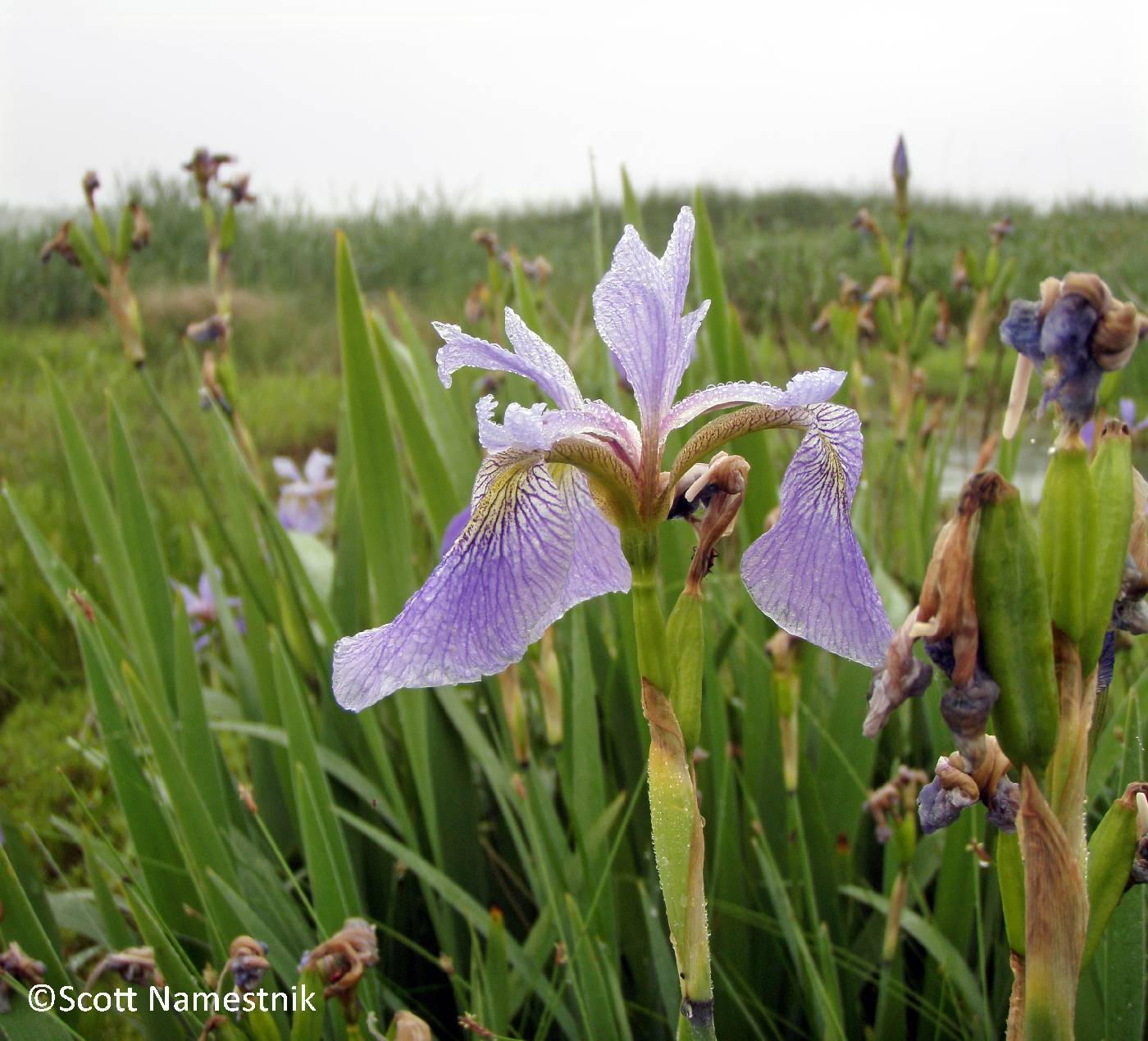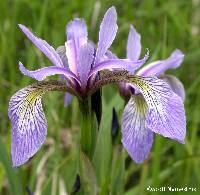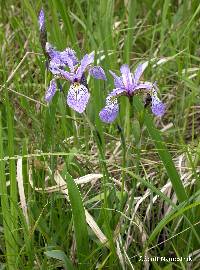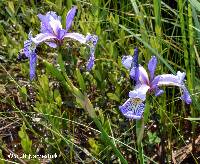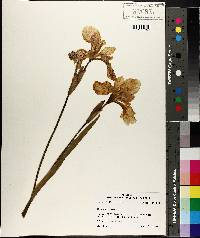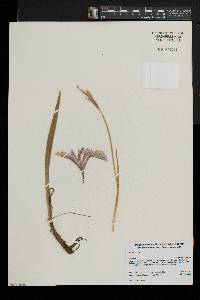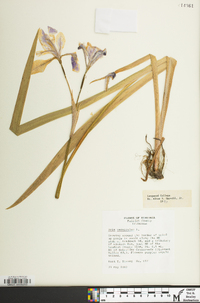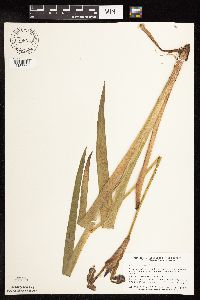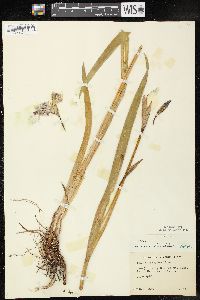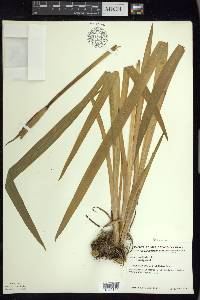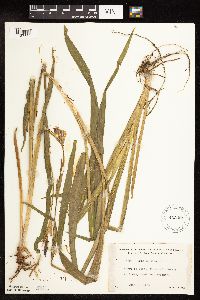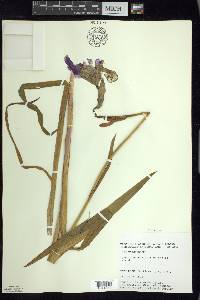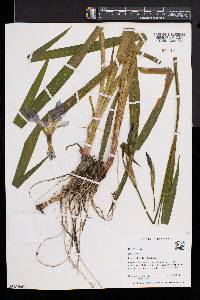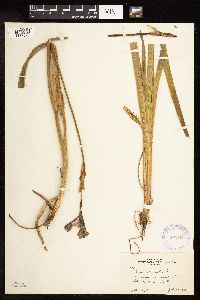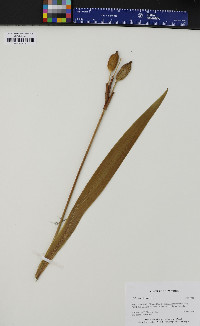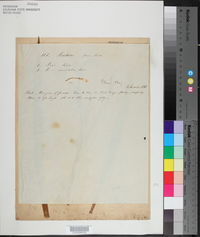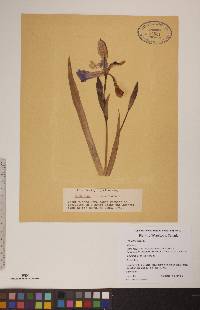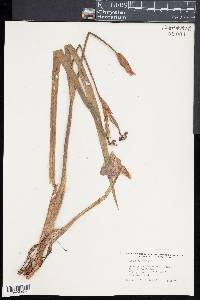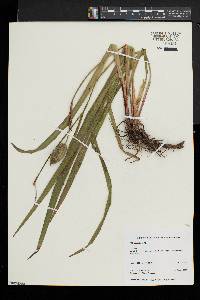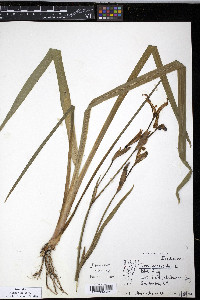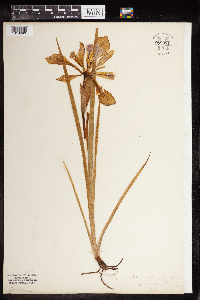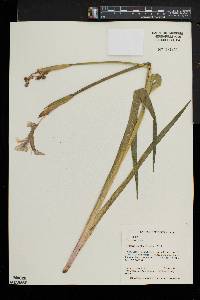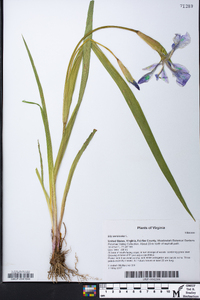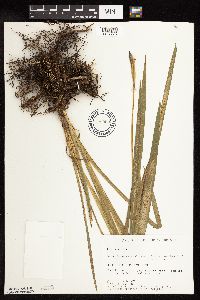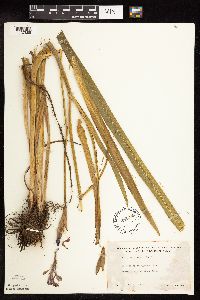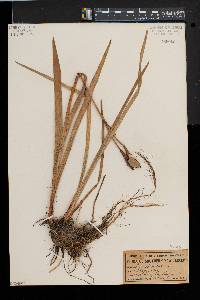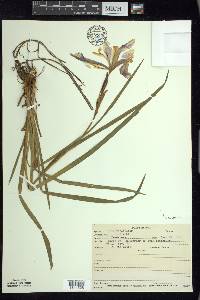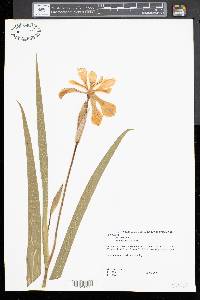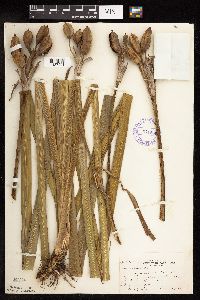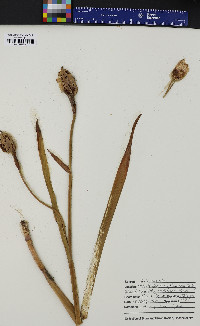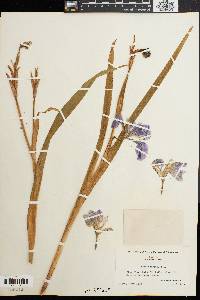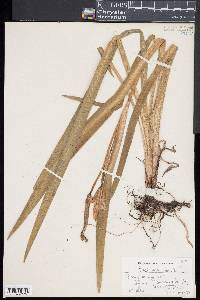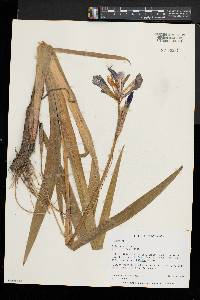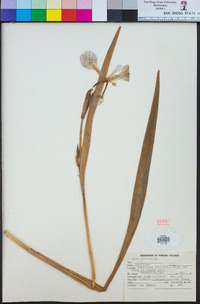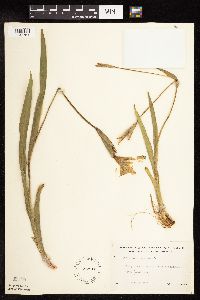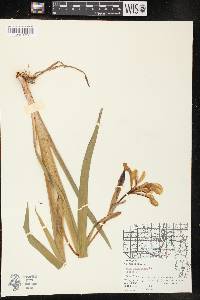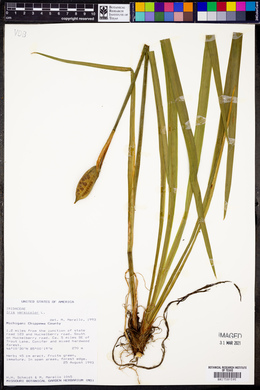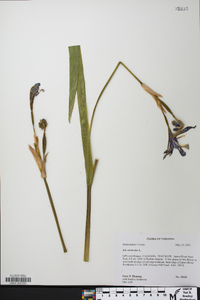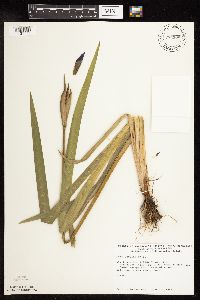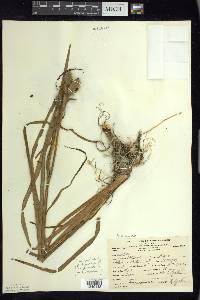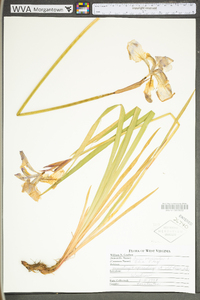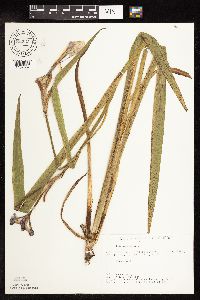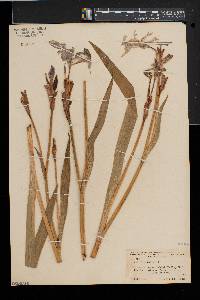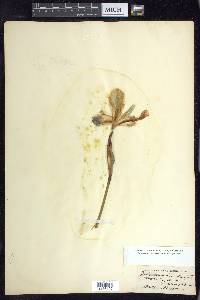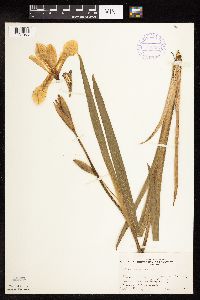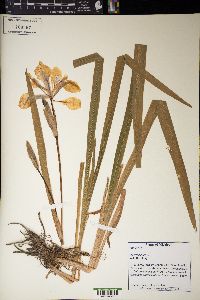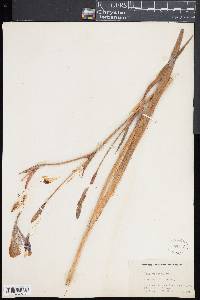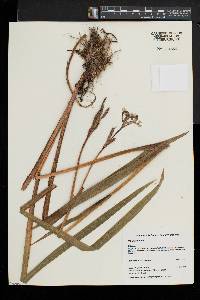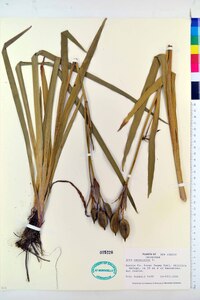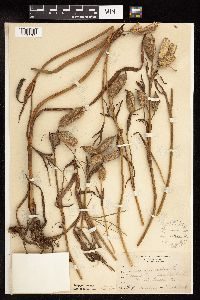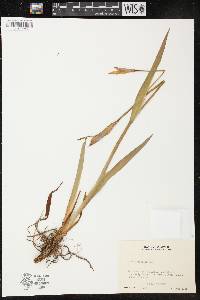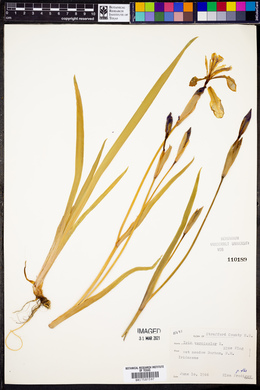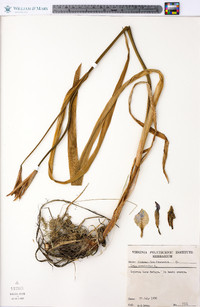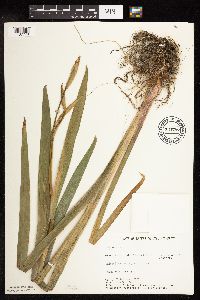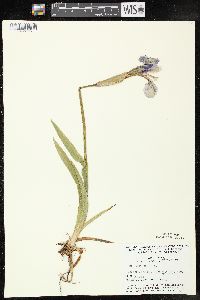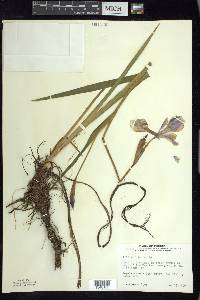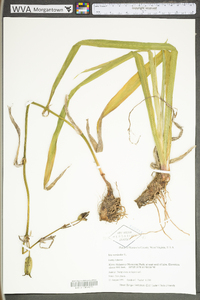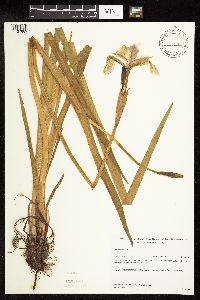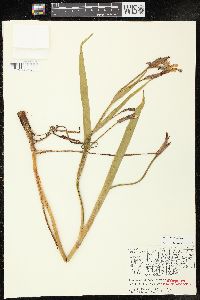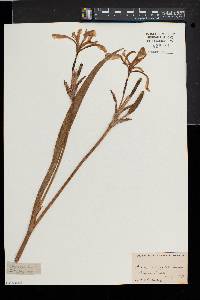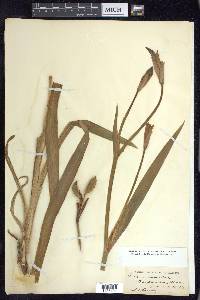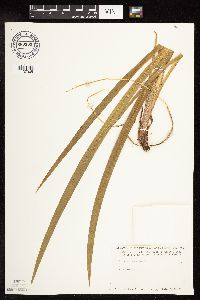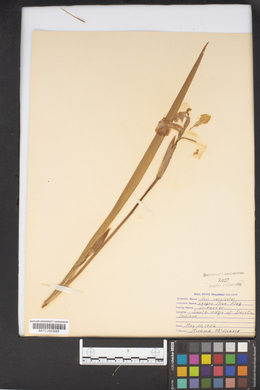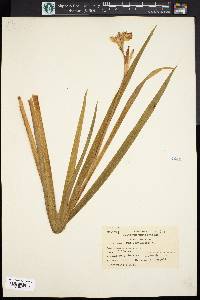Iris versicolor
|
|
|
|
Family: Iridaceae
Harlequin Blueflag
[Iris versicolor f. murrayana Fernald] |
Rhizomes pale pinkish white, freely branching, forming large clumps, 1-2.5 cm diam., clothed with remnants of old leaves; roots fleshy. Stems 1-2-branched, solid, 2-6 dm. Leaves: basal with blade green to grayish green, often purplish basally, centrally thickened in mature leaves, prominently veined, narrowly ensiform, 1-8 dm × 1-3 cm; cauline 1-2, blade linear-lanceolate, seldom equaling stem. Inflorescences compact, units 2-4-flowered; spathes never foliaceous, 3-6 cm, unequal, outer shorter than inner, thickly chartaceous to scarious, margins shiny, darker in color. Flowers: perianth violet-blue to rarely white; floral tube funnelform, constricted above ovary, 1-1.2 cm; sepals ovate to reniform, 4-7.2 × 1.8-4 cm, base abruptly attenuate, signal a pubescent, greenish or greenish yellow patch surrounded by heavily veined purple on white at base of blade; petals lanceolate to oblong-lanceolate, 2-5 × 0.5-2 cm, much shorter than sepals, firm, apex rarely emarginate; ovary rounded-triangular in cross section, somewhat inflated, 0.8-2 cm; style 3-3.5 cm, base not auriculate, margins entire or toothed, crests reflexed, 0.7-1.5 cm; stigmas unlobed, triangular or rounded-triangular, margins entire; pedicel 2-8 cm, frequently exceeding spathe. Capsules often persistent over winter, ovoid to oblong-ellipsoid, conspicuously beaked, obtusely triangular in cross section, 1.5-6 cm, tardily dehiscent. Seeds dark brown, D-shaped, 5-8 mm, shiny, thin, hard, regularly pebbled, not corky. 2n = 108. Flowering May--Jul. Marshy places, along roadsides, shores, and along mountains; Man., N.B., Nfld. and Labr., N.S., Ont., P.E.I., Que.; Conn., Maine, Md., Mass., Mich., Minn., N.H., N.J., N.Y., Ohio, Pa., R.I., Vt., Va., Wis. E. Anderson (1936) showed rather conclusively that Iris versicolor arose as an amphidiploid between I. virginica (n = 35) and I. hookeri (I. setosa var. canadensis) (n = 19). Back-cross hybrids have been produced both ways: I. virginica × I. versicolor producing Iris ×robusta E. S. Anderson, and I. versicolor × I. hookeri producing I. ×sancti-cyri J. Rousseau. Iris versicolor is becoming a weed in New Brunswick, Prince Edward Island, and Nova Scotia. Livestock will not eat iris foliage, but feed voraciously on the competition, thus giving the irises plenty of room to expand.
Lvs broadly linear to ensiform, erect or arching from thick creeping rhizomes and forming large clumps, stems 2-8 dm, equaling or usually slightly exceeding the lvs; bracts with vernicose dark margins; fls on short pedicels, 6-8 cm wide, violet or blue-violet to red- purple, lavender, or rarely white; sep spreading, unspotted or with a minutely papillate, greenish-yellow blotch at the base of the blade surrounded by white variegations and purple veins, the veins extending into the claw; pet erect, half to two-thirds as long as the sep, the claw pale-streaked; ovary 1-2 cm at anthesis; fr bluntly 3-angled, prismatic-cylindric, 3.5-5.5 cm, indehiscent; seeds with a ±regularly pebbled surface; 2n mostly = 108; perhaps an allopolyploid derived from nos. 8 [Iris virginica L.] and 10 [Iris setosa Link]. Marshes, swamps, meadows, and shores; Nf. and Lab. to Man., s. to Va. and Minn. May-July (Aug.) Gleason, Henry A. & Cronquist, Arthur J. 1991. Manual of vascular plants of northeastern United States and adjacent Canada. lxxv + 910 pp. ©The New York Botanical Garden. All rights reserved. Used by permission. From Flora of Indiana (1940) by Charles C. Deam ...... Indiana Coefficient of Conservatism: C = N/A Wetland Indicator Status: OBL |

